Bed Bugs
- Check below to learn about bed bugs, how to identify them, and signs of an infestation
Bed Bug Identification And Extermination
Bed bugs are resilient little pests that have been feeding on blood for thousands of years, with evidence of their presence dating back to ancient Egypt. Despite their small size, they can survive for a year without a meal, making them incredibly difficult to get rid of once they infest an area. What makes them particularly sneaky is their ability to hide in the tiniest cracks and crevices like mattress seams or behind wallpaper, often going unnoticed until a person starts waking up with itchy, mysterious bites. Their stealthy behavior and adaptability to human environments have helped them thrive, even in modern times.
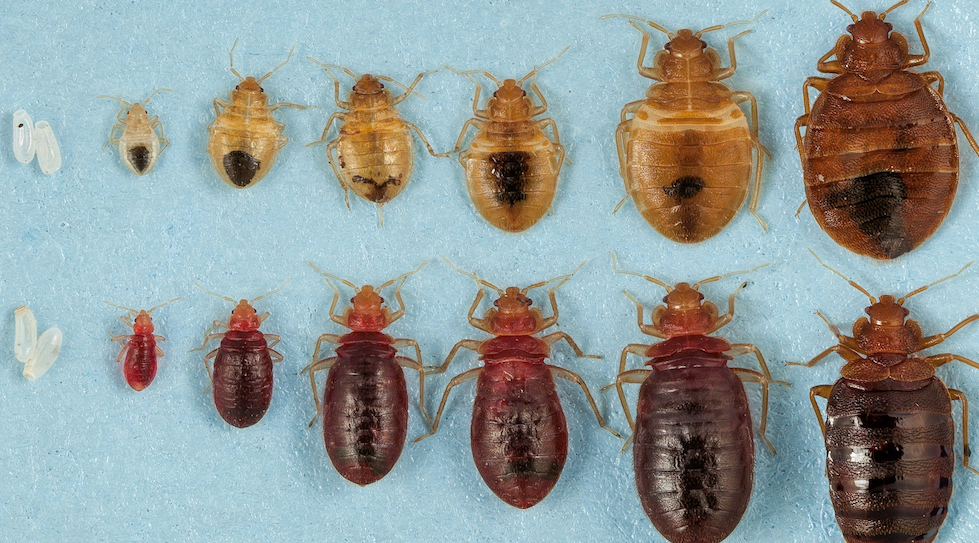
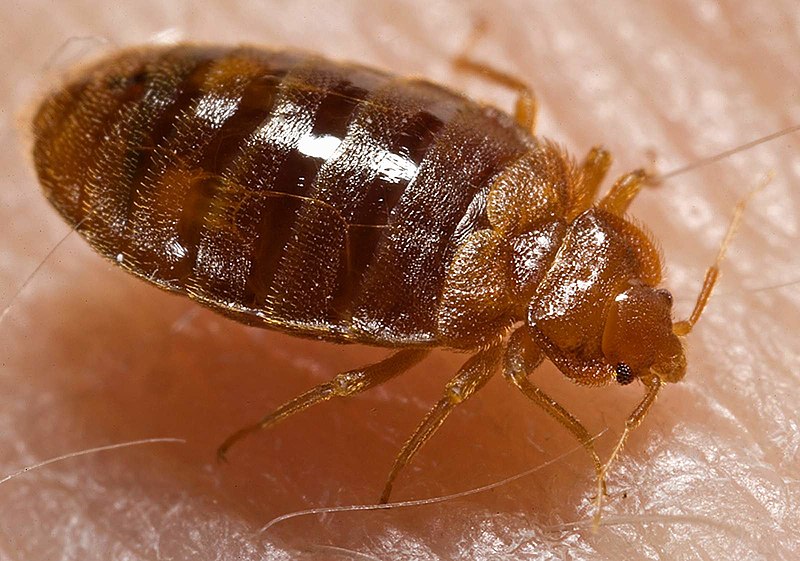
What Do Bed Bugs Look Like - How To Identify Bed Bugs
- Color: Reddish – Brown
- Size: 3/16 Inch
- Location: 5-20 feet of where humans spend their time
Bed bugs are small insects, ranging in size from poppy seeds to apple seeds (adults measure about 3/16 inch in length). They are flat, oval, and reddish-brown in color, with no wings. They undergo a gradual metamorphosis with three stages: egg, nymph, and adult. Under favorable conditions (70-80°F), bed bugs can complete their development in as little as one month, producing three or more generations per year. Entomologists estimate that bed bugs feed weekly, primarily on human hosts, although they will also feed on family pets. They can survive for three to four months or more without a blood meal but need to feed between molts. If a nearby host isn’t available, they will crawl in search of a new host.
Many nesting animals, such as bats and pigeons, have their own type of bed bug. Bat bugs are very similar to bed bugs, and the two are often confused. Bat bugs will feed on people if a bat infestation is removed from a home.
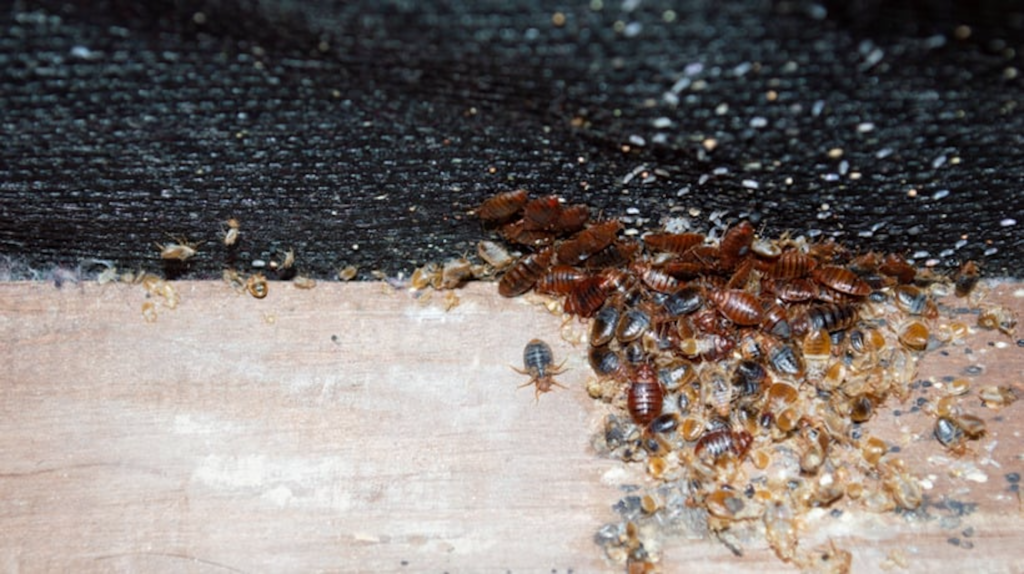
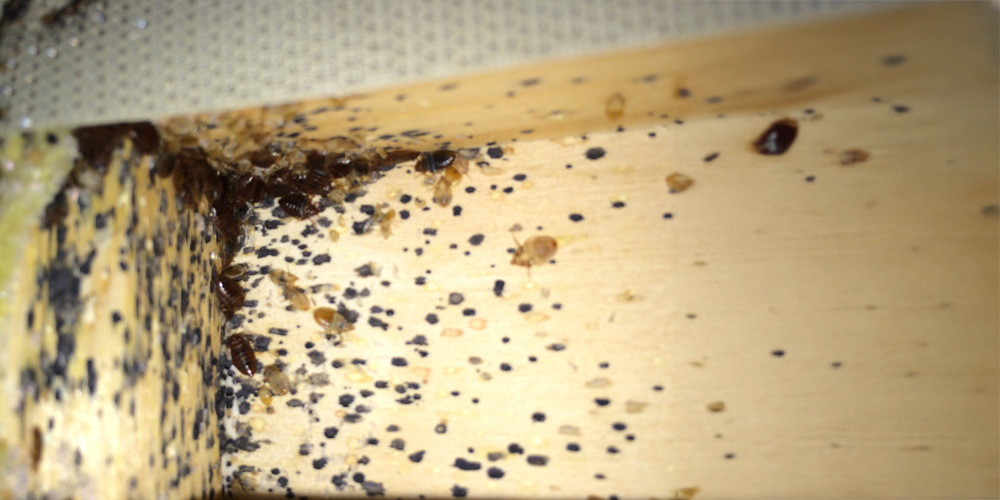
Signs Of A Bed Bug Infestation - How To Know If You Have Bed Bugs
Bed bugs are most commonly found close to where people sleep or spend extended periods during the night. Their small, flat bodies allow them to hide in even the tiniest of spaces. While they can travel over 100 feet in one night, they generally stay within 5 to 20 feet of where people sleep.
Common hiding places include:
- Seams of mattresses
- Edges of carpets
- Box springs
- Bed frames
- Walls
- Ceilings
- Headboards
- Dresser tables
- Cracks or crevices
- Behind wallpaper
- Remote controls
- Spaces within and along floorboards
- Moldings
- Alarm clocks
- Under any clutter
- Light fixtures
- Heating/cooling vents and ducts
Bed bugs can easily move to a new room or floor by crawling or hitchhiking on a person or object, especially when their population increases. They are commonly transported during travel, hiding in luggage, overnight bags, folded clothes, bedding, and furniture. This mobility makes it easy for bed bugs to infest new areas when people relocate their belongings.
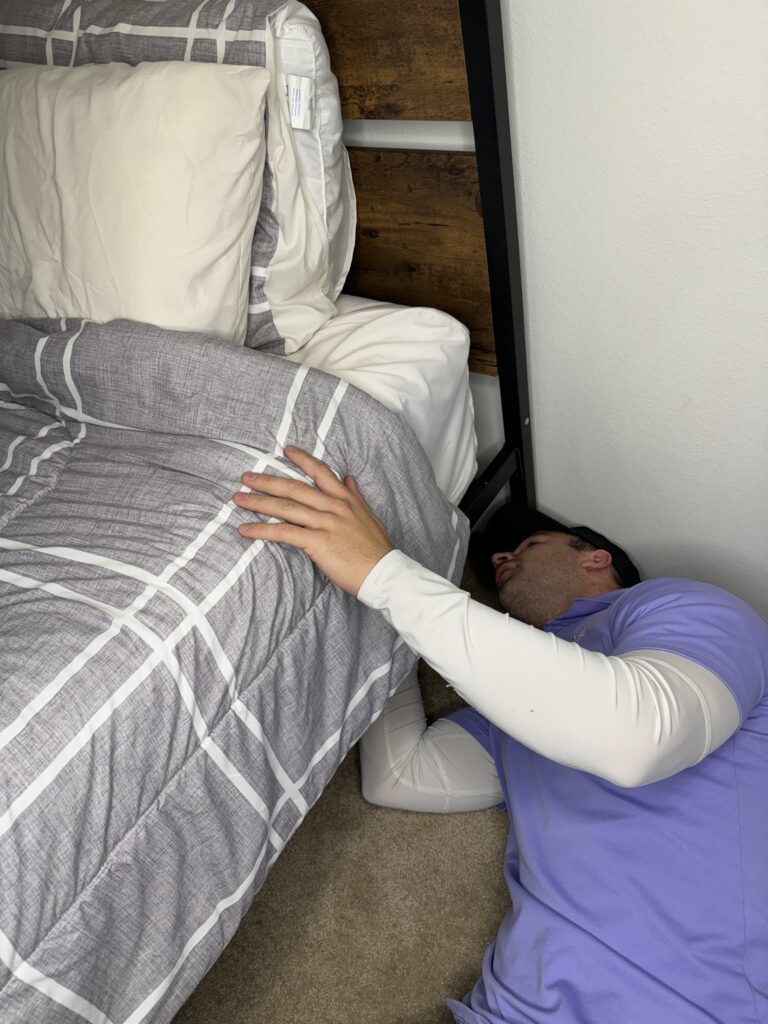
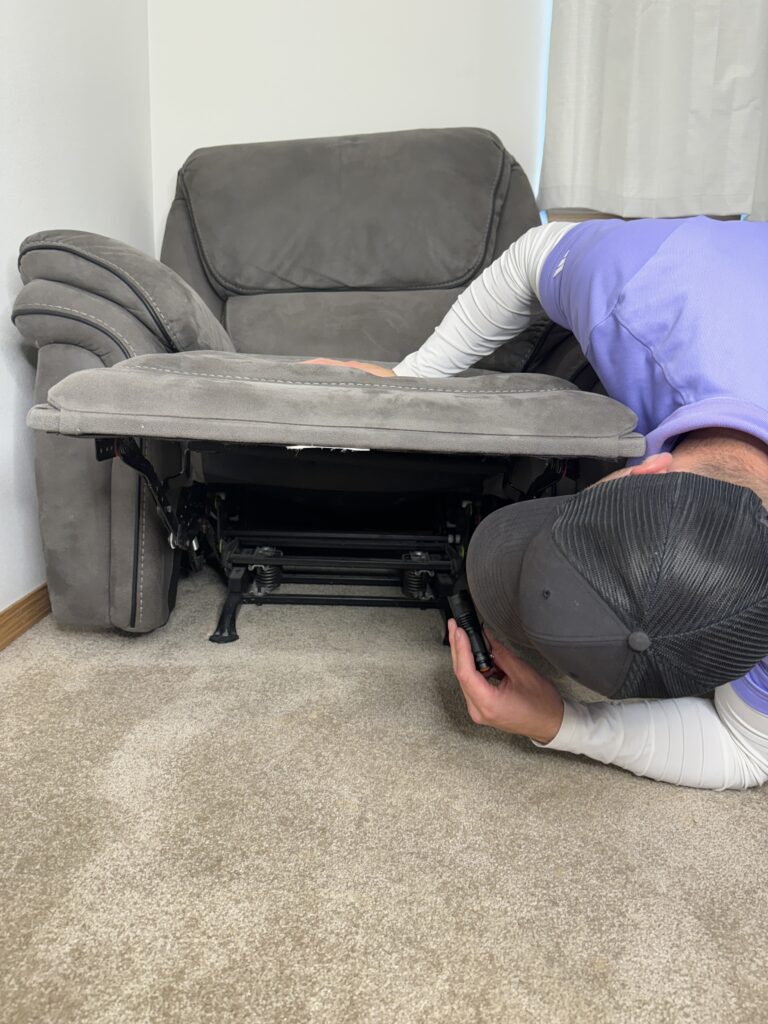
Inspections - To Confirm Bed Bug Infestations
The only reliable way to confirm a bed bug infestation is to identify live insects. Bite marks on the trunk, legs, or arms can be signs that bed bugs are present, but these marks may take a few weeks to develop in some individuals. Therefore, it’s important to look for other signs of infestation.
Key signs include:
- Live bed bugs of various sizes
- Exoskeletons (shed skin) from molting
- Rusty-colored spots from their blood-filled feces
These signs are often found in areas like mattress seams, bed sheets, nearby furniture, and along baseboards. In addition, infestations may produce a sweet, musty odor.
By recognizing these signs and understanding where bed bugs hide, you can more effectively detect and address an infestation.
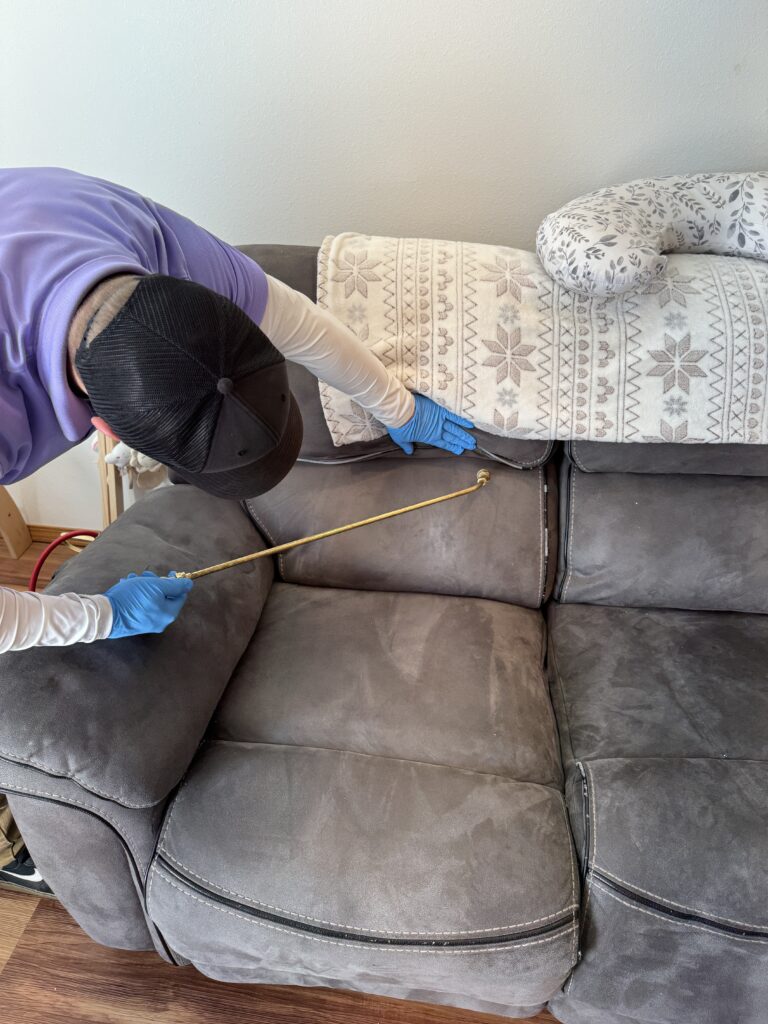
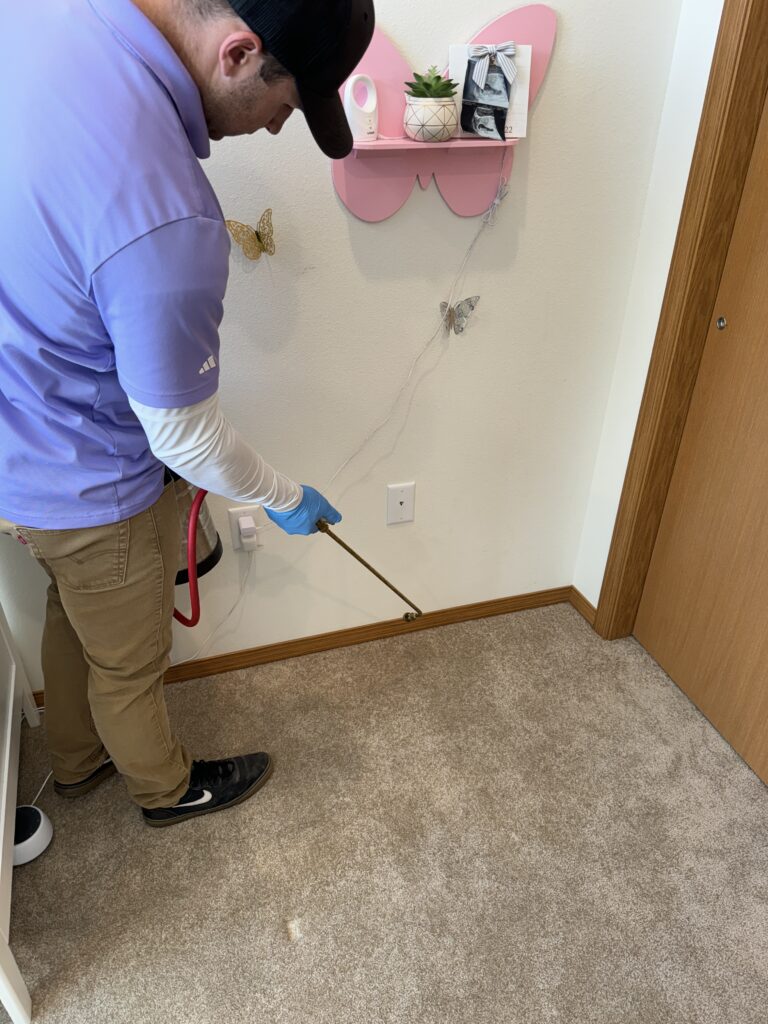
Treatment - Professional Techniques to Eliminate Bed Bugs
Treatment options for bed bugs include:
- Insecticide Treatments
- Heat Treatments
Insecticide Treatment: These bed bug treatments are typically done with 2 forms of insecticides. One being a liquid sprayable insecticide and the second being an insecticide dust. Both products should be labeled to kill adults, nymphs, and eggs and also not be a product that bed bugs have developed an immunity to. These 2 products are applied to areas that are conducive to bed bug hiding. They leave behind a residual that when bed bugs walk across they soon thereafter die.
Heat Treatment: Heat treatments are also an effective way to kill bed bugs in all life stages. Heat treatments work by warming up the entire house up to 135 degrees and maintaining that temperature for a minimum of 4 hours. To do a heat treatment properly all areas of the home must be warmed up and the air inside the home must be properly circulated.
BED BUG FAQ's
How do you know if you have bed bugs?
There are certain things that may be indicators of a bed bug infestation like having bite marks or seeing some bed bug feces. The only way to 100% confirm a bed bug infestation is by finding a live one or an exoskeleton of one.
How do bed bugs spread?
Bed bugs are amazing hitch hikers. They will hide in seams of clothing, shoes, or even your luggage.
What do bed bug bites look like?
Bed bugs often appear just like mosquito bites. They are small red bumps that can be very itchy.
Why do bed bugs bite?
Bed bugs bite humans as their only way of survival. Bed bugs rely solely on human hosts’ blood, therefore making them a parasite to humans.
How do you get rid of bed bugs?
There are 2 different types of bed bug treatment. The first kind of bed bug treatment is by using liquid insecticides. The second type of bed bug treatment is a heat treatment.
How do I prevent bed bugs from coming home with me?
If you are out traveling or staying with a friend make sure to check the room where you are sleeping for any signs of bed bugs. If you want to make extra sure that bed bugs will not be brought back home with you, wash all of your clothes on hot and dry on hot as another layer of protection.
How long can bed bugs live without feeding?
It depends on where the bed bugs are in the life cycle and the climate they are in, but adult bed bugs have been able to live for over a year.
Can bed bugs survive in cold weather?
Yes, they can survive in cold weather. Although if cold weather (below freezing) is maintained for 2+ weeks bed bugs can be eliminated.

